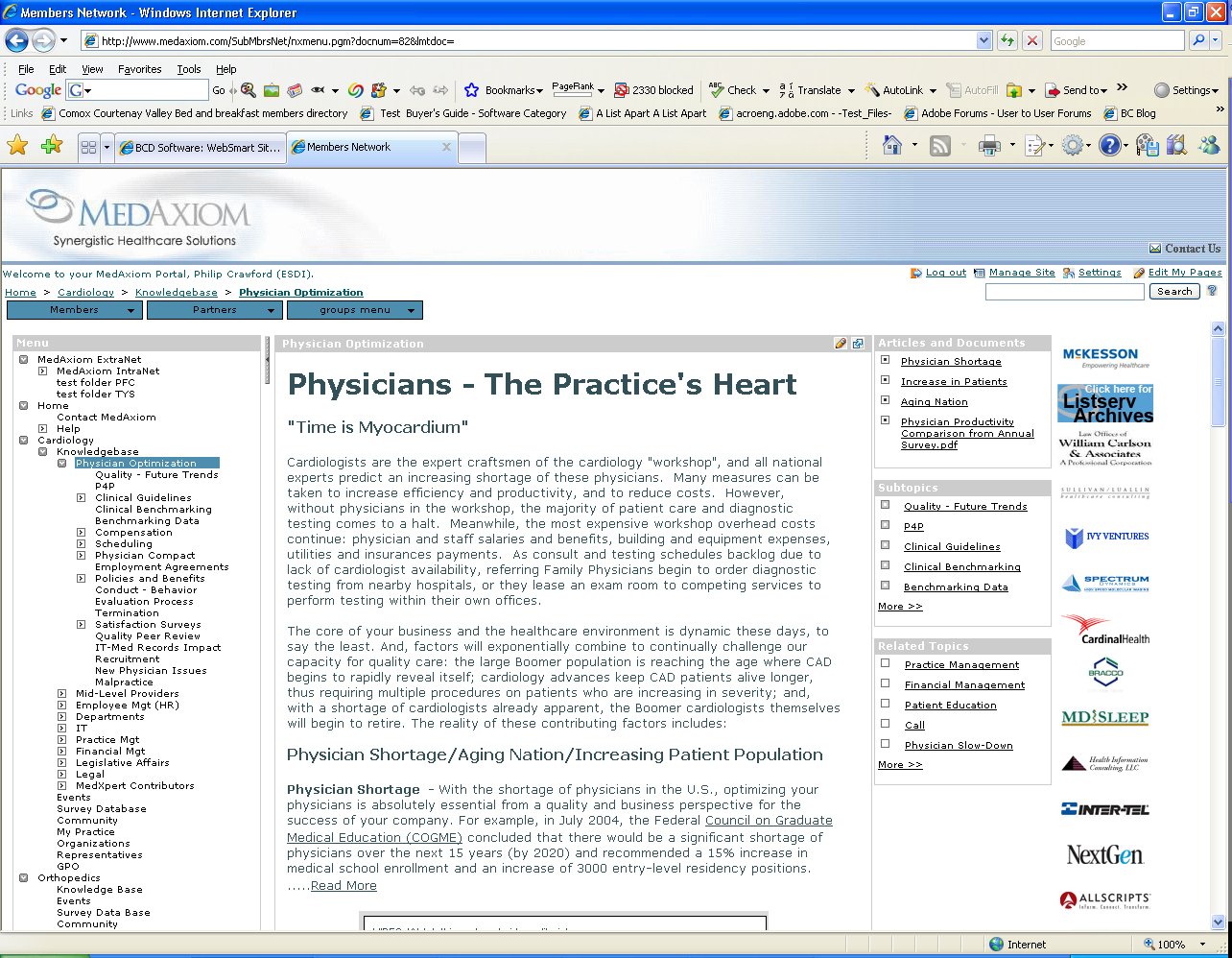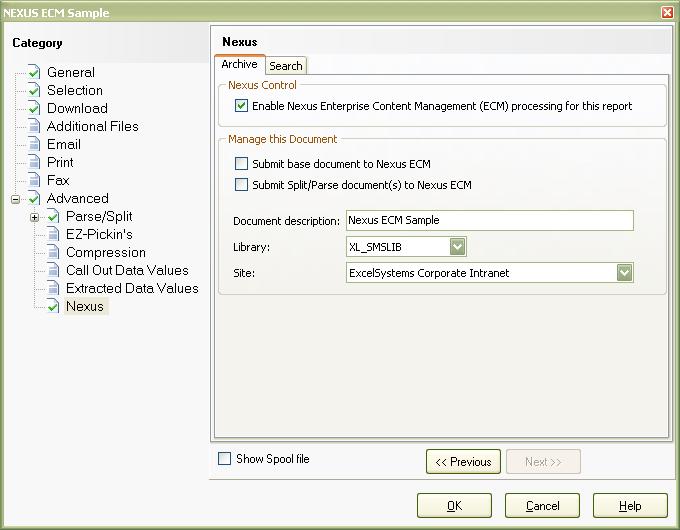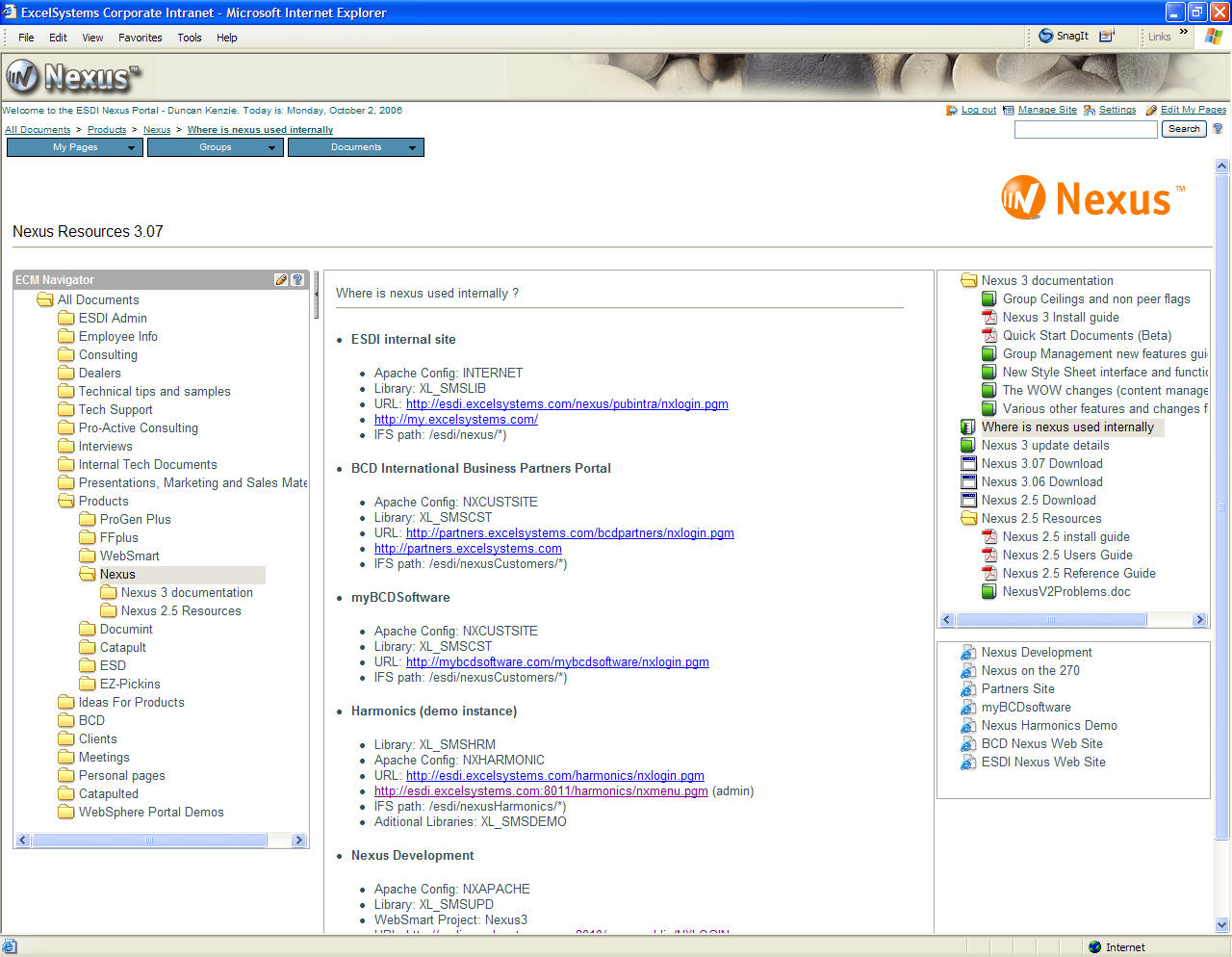With the proliferation of desktops and Wintel/UNIX servers in addition to iSeries boxes in many organizations, the need to provide centralized, structured access to information throughout the organization has become critical. One way to address this challenge is to implement a corporate Web portal. Portals are organic, collaborative Web sites with strict controls over who has access and who can shape their form and function. Nexus is a System i-based portal product that has the following benefits:
- Initial license fees are free, with only annual maintenance being billed.
- It runs on the System i, taking advantage of the scalability, security, and reliability of the platform.
- It allows people to share, collaborate, and learn.
- It provides a framework for deploying composite business applications in a Web or 5250 environment.
- It provides Enterprise Content Management (ECM) to organize and secure both legacy System i spool files and PC files.
- It's easy to manage, empowering users to manage their own content.
Nexus' ECM features, in conjunction with Catapult, BCD's unattended spool file distribution software, can improve collaboration and information-sharing.
What Is Electronic Content Management (ECM)?
ECM describes functions that provide centralized delivery of electronic content to users. In Nexus, ECM has the following core features:
- Easy methods for users to publish existing documents or create new documents in the portal
- Flexible, user-configured keyword searches for content
- Content security by user, groups of users, or subgroups
- Integration with distribution of legacy spool files
Benefits of ECM
With ECM, you can vastly improve communication throughout your organization. This increases efficiency, productivity, and the quality of life in the workplace.
ECM is a centralized source of information with a customizable user interface for access so team members don't create silos of information that are inaccessible by others. For example, an HR executive can write a company policy document on bereavement leave and publish it in the ECM for every constituent of the portal, while the COO may write and publish a policy on travel per diems to be shared only with department heads.
ECM provides functions for restricting access to appropriate portal constituents at the time documents are published. Further, ECM provides an optional folder-tree design for organizing content so users can either search for documents or navigate through the tree. The folder-tree structure emulates the familiar Windows Explorer user interface, which promotes use of the portal, since it's an interface users will already be comfortable with. The folder tree is more powerful than in Windows, though. For example, only content that you can view appears in the tree nodes, further minimizing security risks. And you can have virtual links in the tree, so only one occurrence of a document needs to be published to the ECM, but it can be linked to from multiple places. The search functionality is powerful, too, because you can create your own customized indexes for any document. For example, if you publish a set of invoices each week, you can create an index keyed on invoice number in addition to description. This would allow a user to type in a search argument such as invnum=2012345 to find a specific invoice.
See Figures 1 and 2 for examples.

Figure 1: This is an example page of a Nexus portal using ECM. (Click images to enlarge.)
Figure 2: Here's another example.
Publishing System i Spool Files to the ECM
Nexus ECM is tightly integrated with Catapult, BCD's automated spool file distribution solution. You can use Catapult to grab and transform spool files, without having to print reams of paper, and have those spool files published in the ECM. Figure 3 shows part of the user interface in Catapult, where you tell Catapult to distribute a report to the Nexus ECM. You can also configure the ECM portlet to automatically create intelligent indexes over the contents of spool files.

Figure 3: The Catapult interface to Nexus looks like this.
Browser-Based Portal
Since Nexus runs in a browser, you can provide access to the portal from the internal networks of your organization (intranet) or over the public Internet (extranet). You can also provide tightly controlled access to specific areas of your portal for customers or vendors.
With Nexus' portal architecture and its ECM features along with Catapult, you need never lose track of important enterprise information again.
Check out BCD's other offerings in the MC Showcase Buyer's Guide.
Duncan Kenzie is President and CTO of BCD Technical Support, the development and support group for WebSmart, a popular iSeries Web development tool, and Nexus, a portal product specifically designed for iSeries, i5, and AS/400 servers. Duncan has 29 years of experience on the midrange systems platform creating software for both green-screen and native Web environments.













 Business users want new applications now. Market and regulatory pressures require faster application updates and delivery into production. Your IBM i developers may be approaching retirement, and you see no sure way to fill their positions with experienced developers. In addition, you may be caught between maintaining your existing applications and the uncertainty of moving to something new.
Business users want new applications now. Market and regulatory pressures require faster application updates and delivery into production. Your IBM i developers may be approaching retirement, and you see no sure way to fill their positions with experienced developers. In addition, you may be caught between maintaining your existing applications and the uncertainty of moving to something new. IT managers hoping to find new IBM i talent are discovering that the pool of experienced RPG programmers and operators or administrators with intimate knowledge of the operating system and the applications that run on it is small. This begs the question: How will you manage the platform that supports such a big part of your business? This guide offers strategies and software suggestions to help you plan IT staffing and resources and smooth the transition after your AS/400 talent retires. Read on to learn:
IT managers hoping to find new IBM i talent are discovering that the pool of experienced RPG programmers and operators or administrators with intimate knowledge of the operating system and the applications that run on it is small. This begs the question: How will you manage the platform that supports such a big part of your business? This guide offers strategies and software suggestions to help you plan IT staffing and resources and smooth the transition after your AS/400 talent retires. Read on to learn:
LATEST COMMENTS
MC Press Online